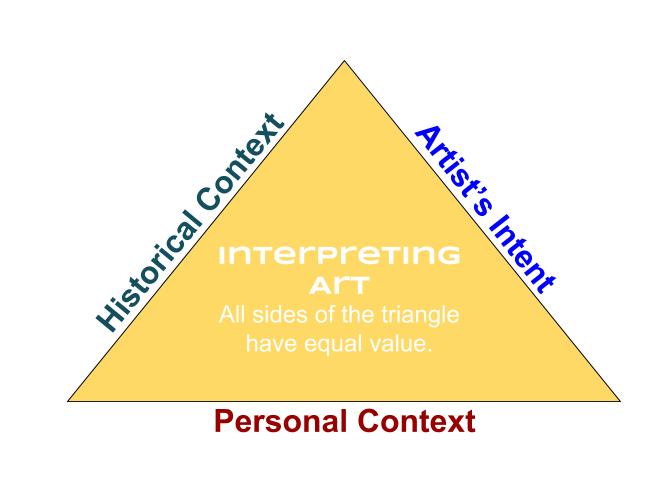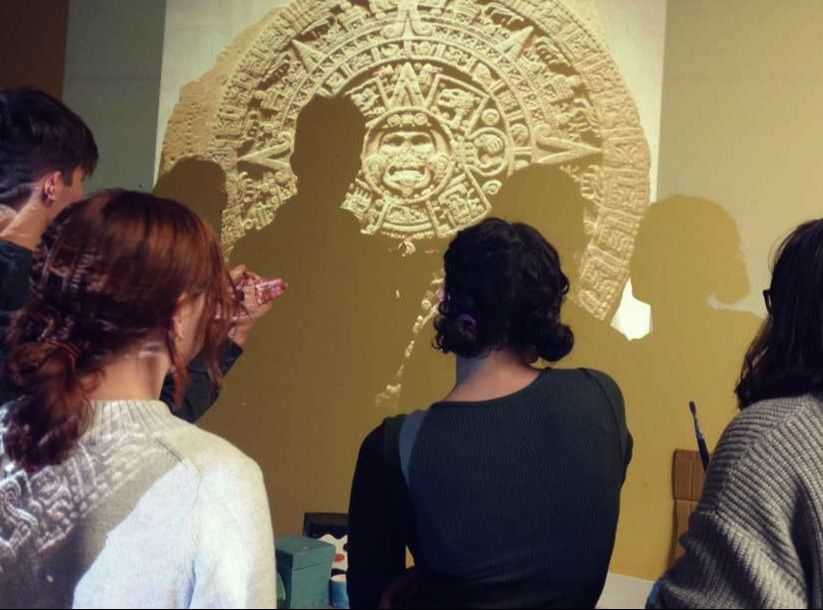|
I used to think look in at an image was like trying to figure out a puzzle - If I was smart enough I could figure out the meaning. I brought this understanding to my teaching in the form on lessons based on specific artists and the formal qualities of art. I'd show Van Gogh and talk about line and texture and color, then have my kids "study" the work by making child friendly replicas. I use the term "study" in quotation marks because I now realize that there was little studying going on and a lot of listing to me and following my directions. Later, though my approach to art-making became much more student directed, I brought a similar approach as before to looking at art with my high school students, especially in my art history classes. I'd make bulleted lists on my slide show presentations of all the important information they needed to know, then I'd tell them about it. My approach now is so, so different and much more impactful. Instead of starting with me, I start with them. What do you see? I ask, then wait. They do the rest. I learned this visual thinking strategy, as well as many more as part of the Fellowship for Collaborative Teaching I'm participating in this school year with the North Carolina Museum of Art. In the image above, of the Aztec Sun Stone, my students, just by looking at the image with no context from me, were able to pick out almost all the important aspects of the work I'd address myself. Some were comments were in the form of prior knowledge - "I've seen this in Mexico City! It's bigger than the wall!". Some were in the form of observation based in the work - "The sun looks like a skull". Some were questions - "Why does the skull have hands?" All these contributions to the discussion work together to make collective meaning much deeper than I could make on my own. When I did discuss my knowledge of the work the students were curious and engaged, waiting to find out what the artist's intent and the cultural significance of the work were.  What I've realized this school year, through putting what I've learned during the NCMA Fellowship into practice, is that personal context is a powerful lense to approach images from. It's inclusive, engaging and welcoming. Art is not a puzzle to figure out and teaching it can't be just about what I know it means. Looking at art with students is a journey that works best when I start with them. For great resources check out NCMAlearn and Visual Thinking Strategies (VTS)
Thanks to Kristin, Jill and Michelle for all you do for teachers.
0 Comments
Your comment will be posted after it is approved.
Leave a Reply. |
Mrs. PurteeI'm interested in creating a student student centered space for my high school students through choice and abundant opportunity for self expression. I'm also a writer for SchoolArts co-author of The Open Art Room. Archives
December 2019
Categories
All
|

 RSS Feed
RSS Feed